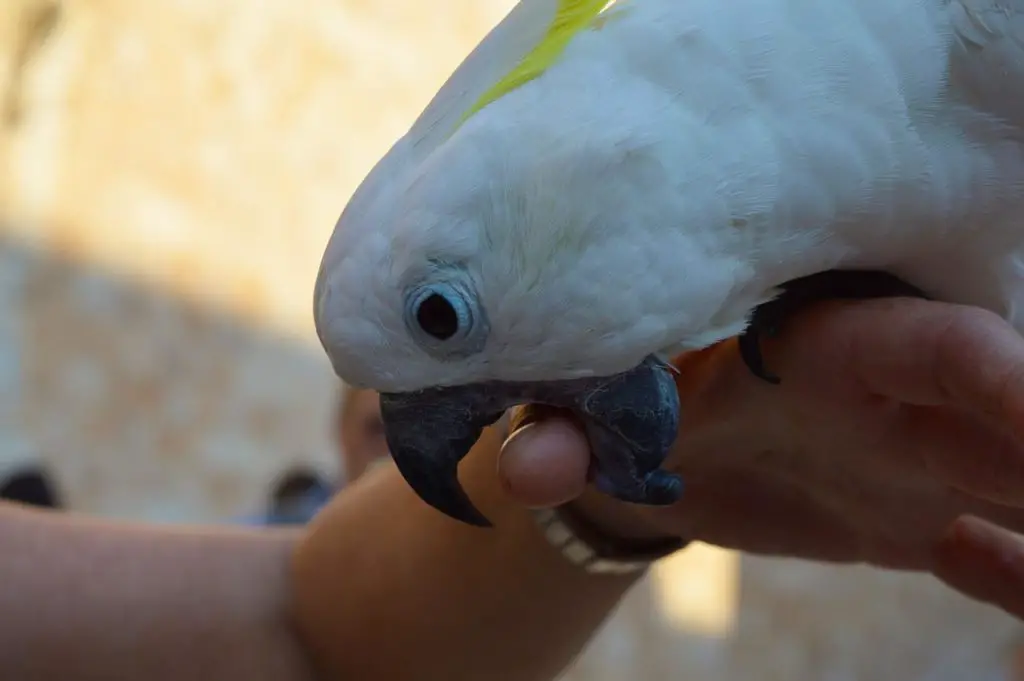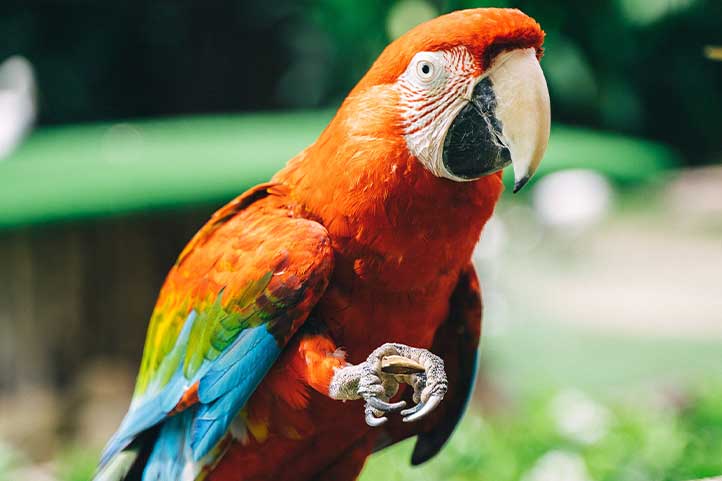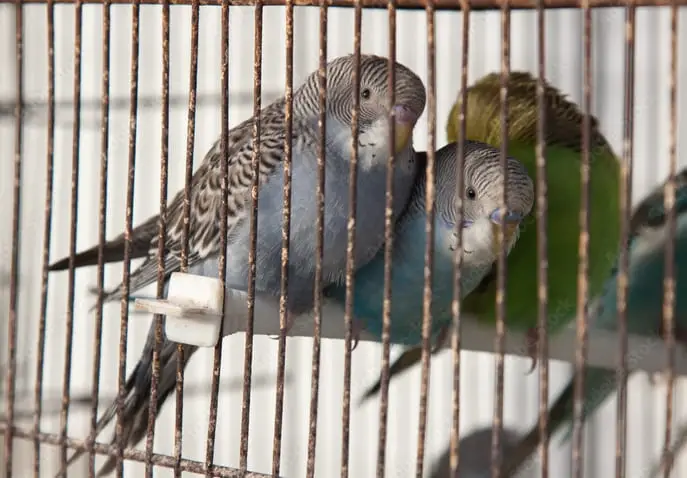Translated by Nick R
Does your recently arrived bird bite you? The reasons why a bird will bite are always related to a natural defense reaction, so we can understand that biting or being surly is rather a matter of instinct and perceiving us as a danger than a bad behavior that needs to be corrected.
Below, you’ll learn how to deal with this and how to tame your bird.
Table of Contents
Get to know the condition of your bird before adoption
Before you start bonding with your bird, you need to know its previous housing conditions. Whether he lived in a larger cage with many other birds, whether contact with humans was constant or isolated, and whether he had access to toys or was simply perched on a perch.
All these things will allow you to understand a little more about the bird’s behaviors and guide you on how to bond with him, whom from now on we will see as a friend.
Get to know your bird’s body language and personality
As we already know part of our winged friend’s history, we must now know the way the bird expresses its discomfort: commonly leaning backward. This may be accompanied by:
- Agitation.
- Grunts or hisses from the bird.
- Fluffy neck feathers.
- Jerky back-and-forth head movements.
Each one of these is a warning sign for us to understand that it is not comfortable in its current situation and we can know that we should be cautious in approaching it.
Personality
The bird’s personality is also important to take into account, as some of them may be more docile, friendly and sociable than others, who will be more shy, solitary, and nervous.
A good example of this is a pair of an acquaintance’s cockatiels with totally different personalities: Rufino is more sociable, and loves to play with mirrors and walk around the apartment, while Cayetana is very shy and skittish.
Don’t force the bird to do things it doesn’t feel safe doing
Forcing the bird to do things it doesn’t feel comfortable doing, such as picking it up in your hands, will only negatively reinforce its perspective of you by perceiving you as dangerous and unfriendly. In other words, doing this will only cause the bonds we want to build with her to fragment.
Remember to react calmly to their bites
If at some point you get bitten by your bird, either because you try to manipulate it or you were changing its food, do not react sharply or scream, it is best to remain calm and try to remove your finger or hand a few at a time to prevent your bird from getting upset and trying to attack more.
5 steps to tame a bird

1. Give it time to get used to its new home
Once you have adopted your bird, the first thing to do is to give it some space in a quiet place where it can feel safe and calm; adjusting to new conditions can be difficult for a bird.
The estimated time of adaptation could be of 2 weeks. During this time, you’ll have to try other types of actions that you’ll know more about later.
During daily care, try to…
A good way to express calmness to your bird is through soft hand movements and talking to it with a warm and welcoming tone without raising your voice, this type of action will have an impact on the way your winged friend perceives you.
2. Approach your pet’s cage gently
Although we know that daily care tasks do not wait, in this step you must choose a time of day during the week to do the following:
- Stand at a safe distance from the cage (about 3 meters). Ideally, at that distance, your bird won’t consider you a threat and become frightened.
- Then, without looking the bird in the eye and with slow steps, start to approach it, always paying attention to the warning signs.
- If at one point you see that it intends to move away you should stop immediately and wait for it to calm down.
- Once it has calmed down, you can leave the place and try again the next day.
- If it does move away you will have to do the same thing, wait for it to settle down and then leave, because if you do it immediately you will reinforce a negative behavior that can make you look bad again.
3. Spend some time with your bird
Another way to start bonding with your winged friend is to include it in your daily activities. The more it gets used to your presence, the better chance you have of it being docile to you.
Activities such as eating, writing, working next to its cage, or just sitting and talking can help you at this stage.
4. Leave snacks for them to eat and become more confident
Although part of each of the steps you have seen can be applied together, you may have more progress between some of them than others.
Here we’ll use positive reinforcement, which is when we make the bird change its perception of something through a reward or action, in this case focusing on how it perceives us.
Snacks such as bread, sunflower seeds or some fruits are favorites of many birds and are also an excellent way to make positive reinforcements to make our winged friend more docile to us. There are two ways to do this:
- If our bird is still refusing to approach us after several attempts, we can try leaving some snack in the cage facing us so that it starts to approach us and can stop seeing us as a danger but rather as someone it can trust.
- Another way, although a little more advanced, is to leave the food in your hands and wait for your bird to approach so he can take a bite. If this step is successful, wait until it finishes eating and comes down from your hand on its own.
These types of rewards can eventually be exchanged for petting or other types of interactions. Remember that all extremes are bad and getting the bird used to food can be counterproductive by seeing us only as a source of food and not as what we want, which is a friend.
5. Share games, tricks, and more
If you finally got your bird to trust you, to see that when you approach it does not move away and instead shakes its feathers and comes closer to you, it will be time for you to start doing other things with it:
- Taking it out of the cage and playing with it outside.
- Teach it to climb on your finger and do other tricks.
All this will depend on your bird’s personality, the most important thing will be that you keep the bond and share with your winged friend as much as you can since you have finally tamed him.
Friendly reminder
Some of your bird’s rough actions such as biting or attacking you may be related to how it feels inside the cage. For example, whether it has access to play, good food, water, a nest, and companions, or due to hormonal causes. In any case, the most important thing is that above all else you always ensure the welfare of your bird.


